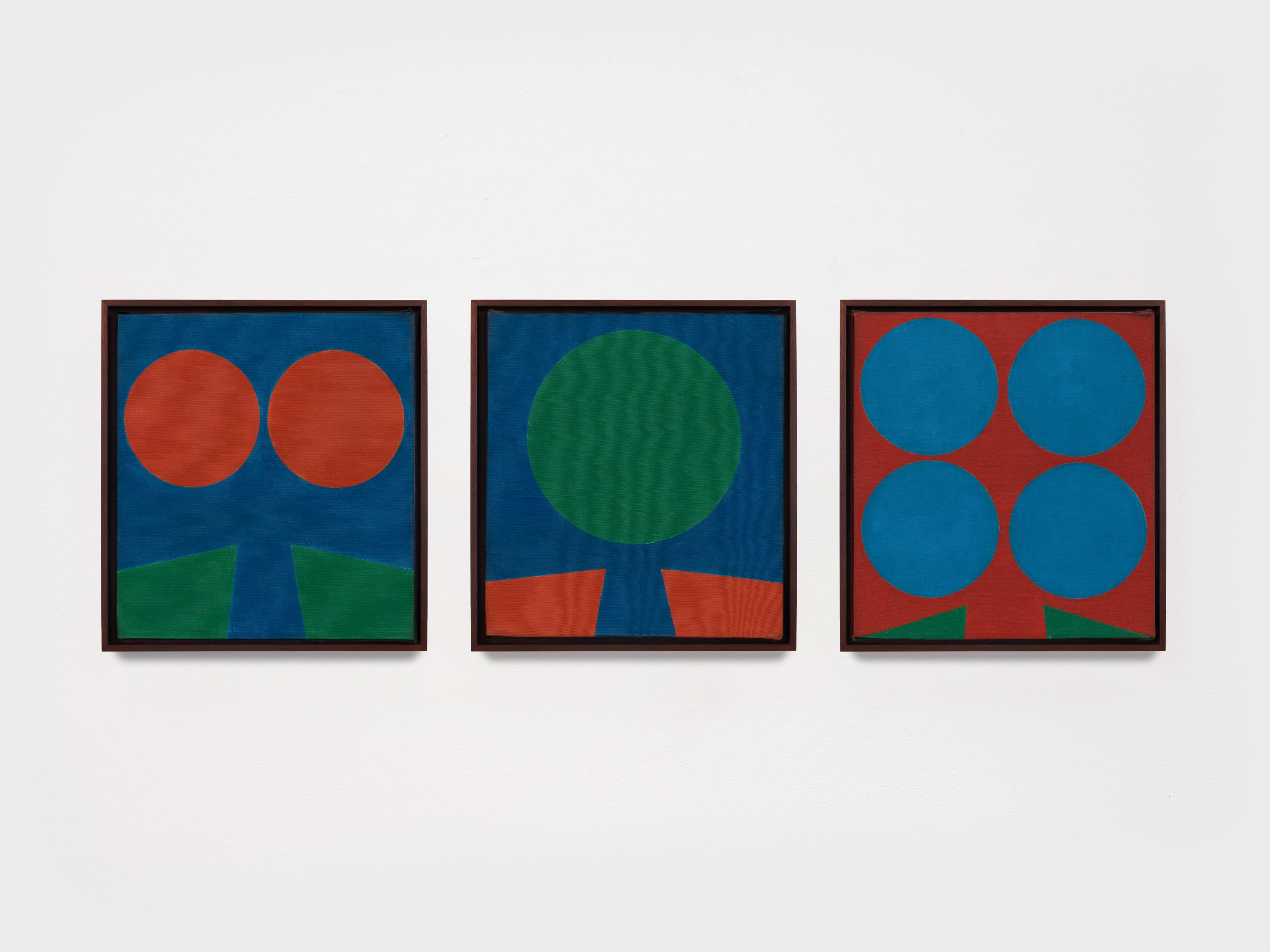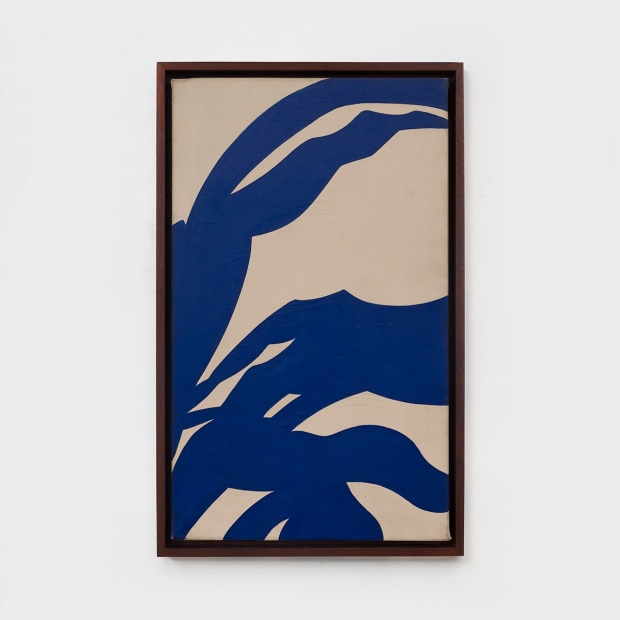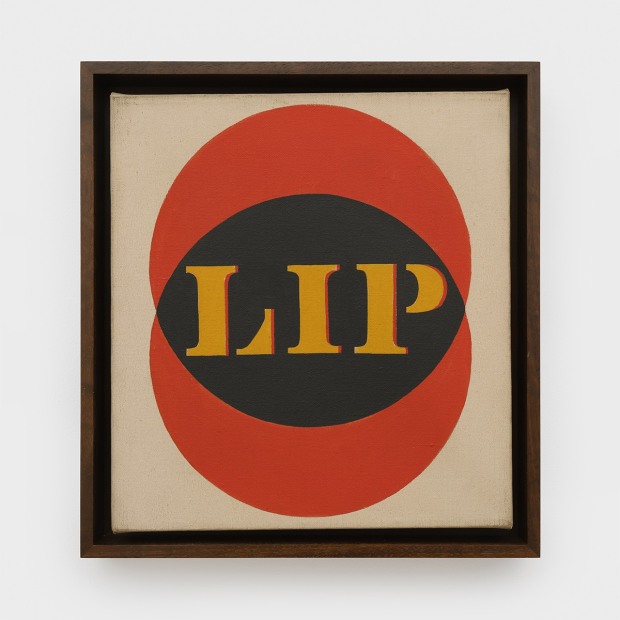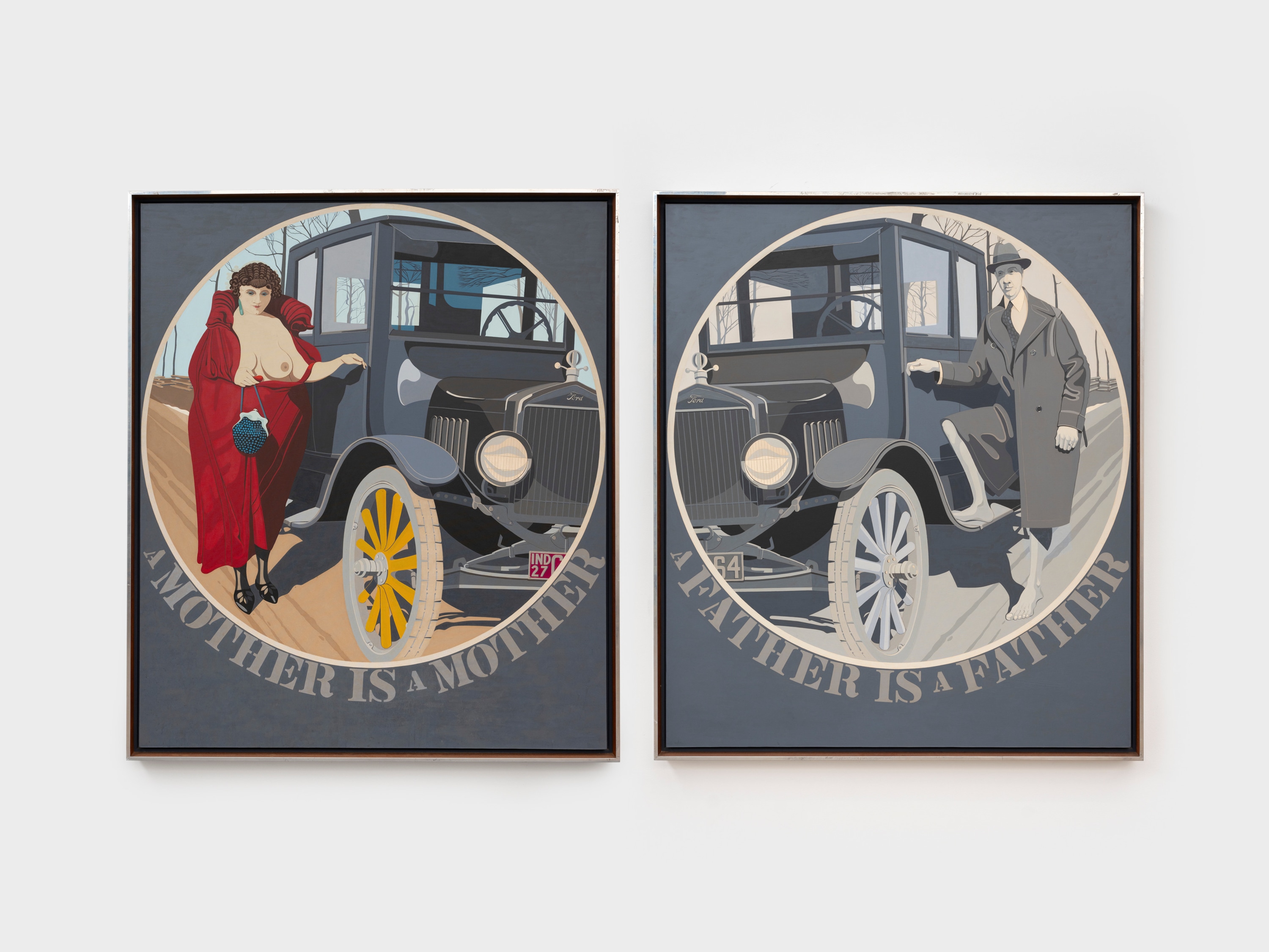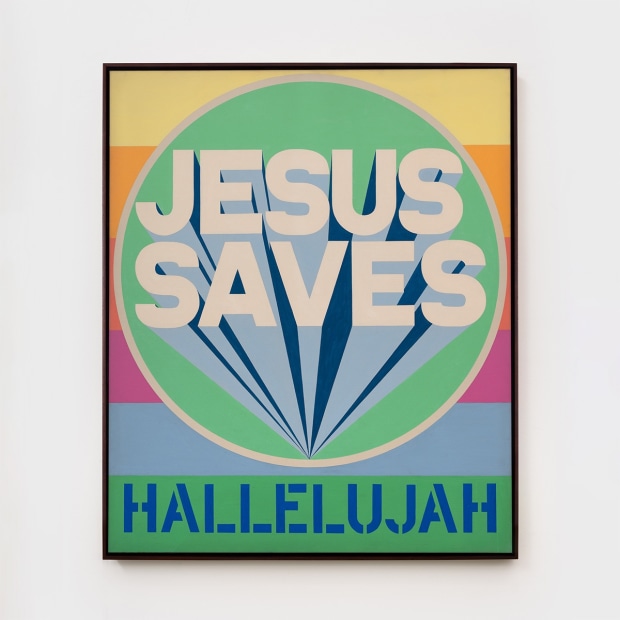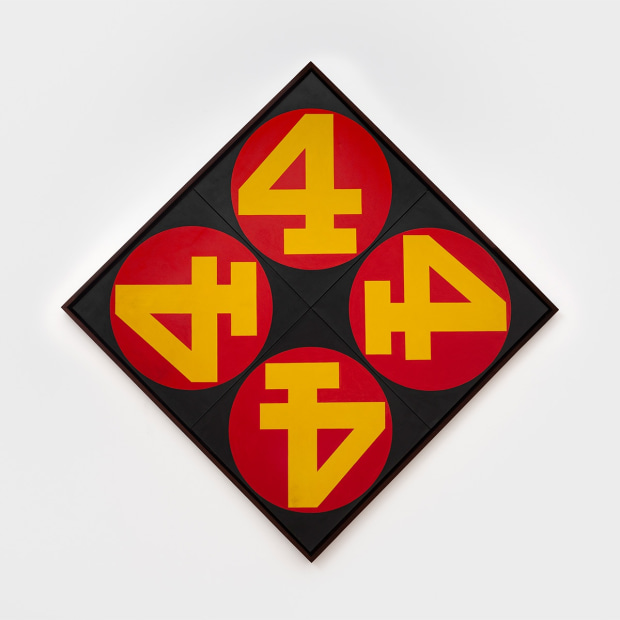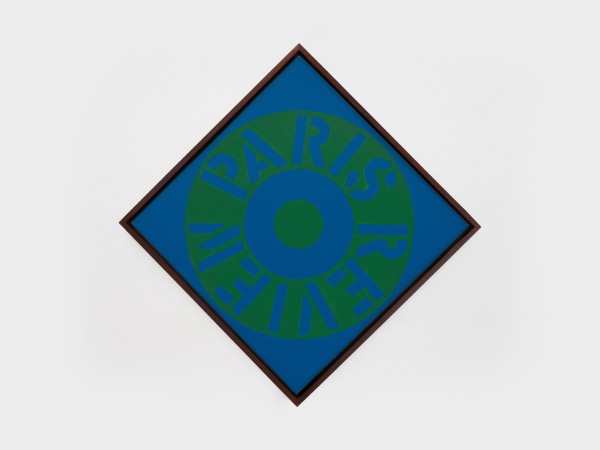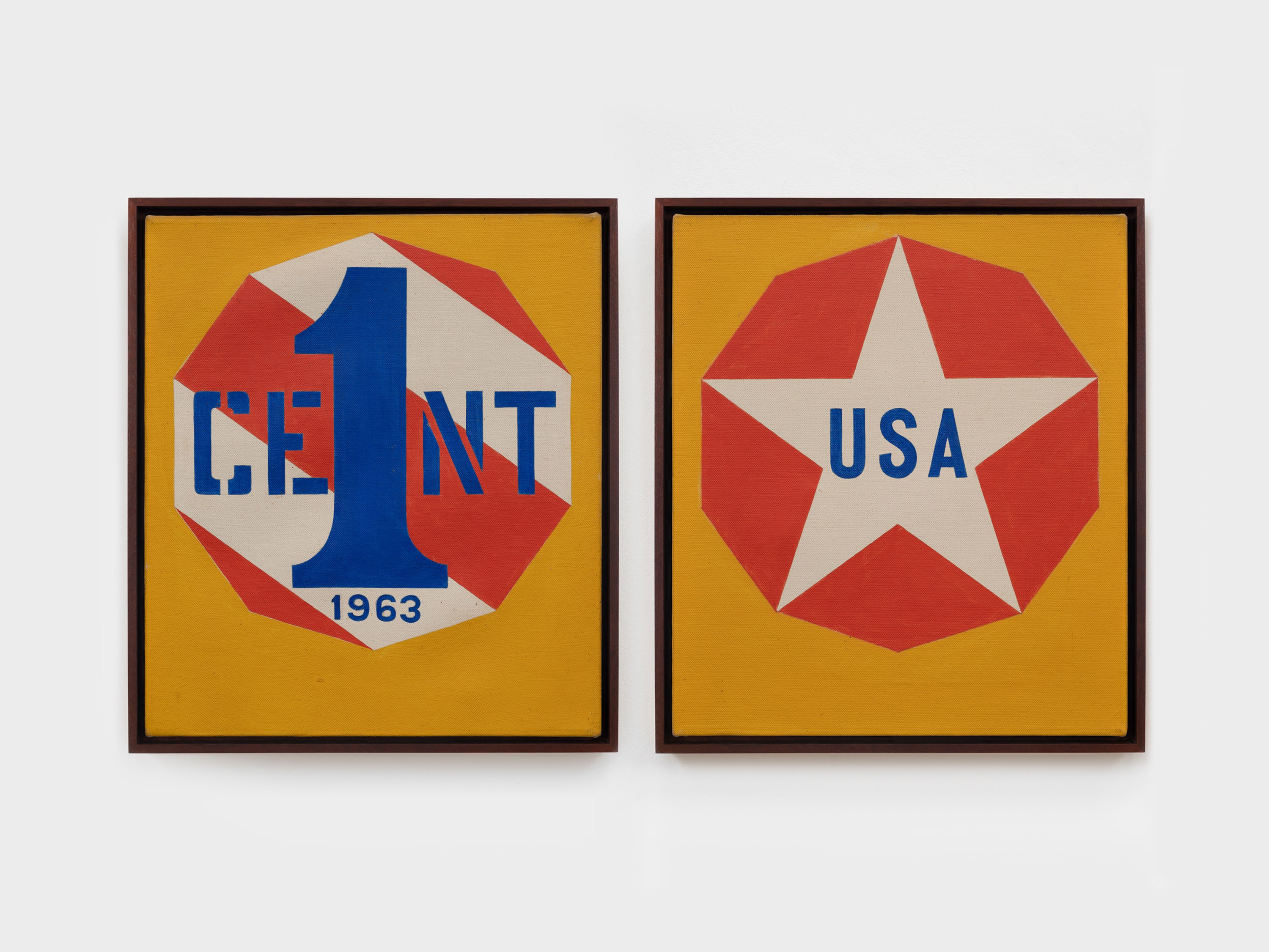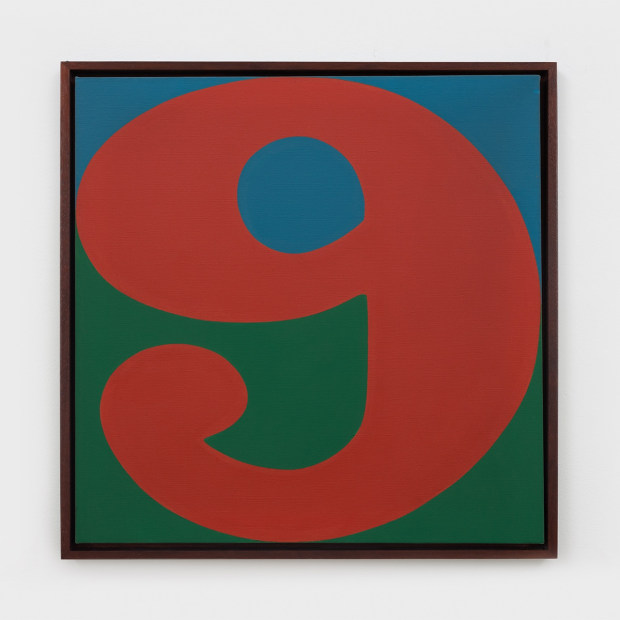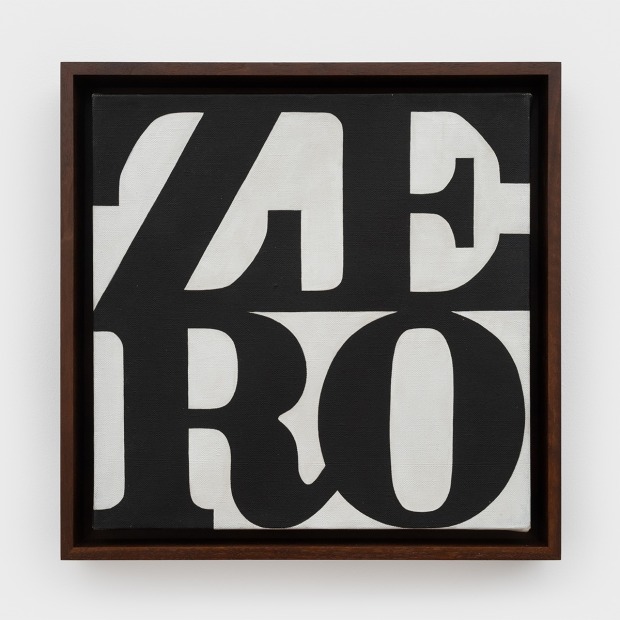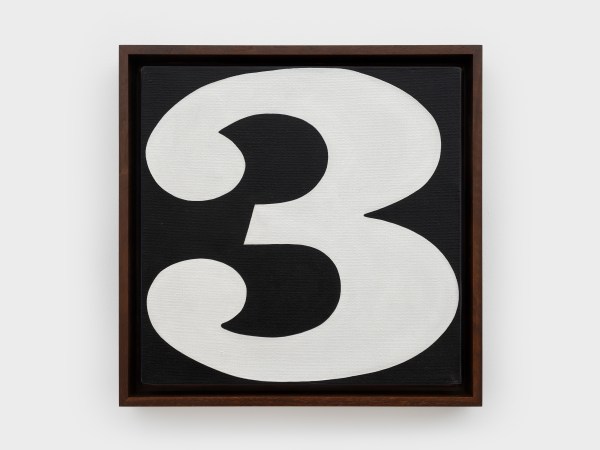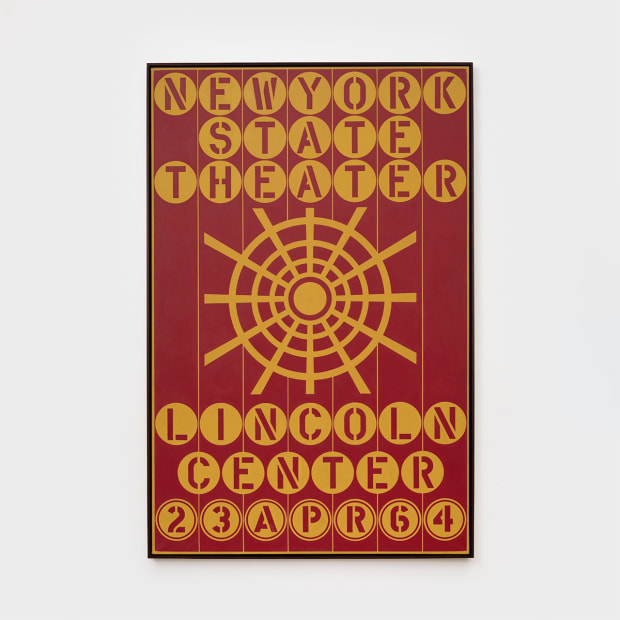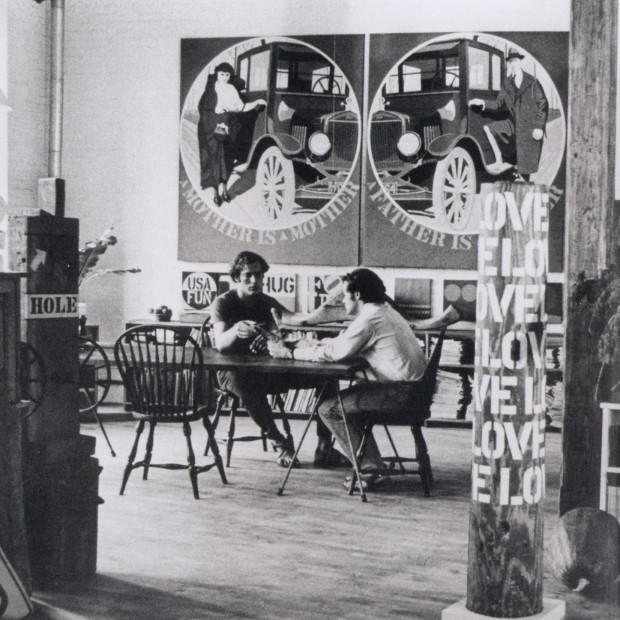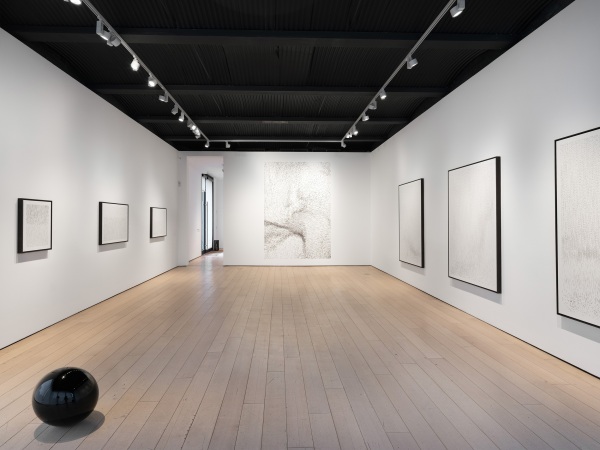Robert Indiana:
The Source, 1959–1969
-
-
Kasmin presents Robert Indiana: The Source, 1959–1969, a focused survey of the transformative decade in which Indiana established his unique artistic language, achieving wide recognition and cementing his place as an icon of American art. Featuring 20 works drawn exclusively from the artist’s personal collection as endowed by Indiana to the Star of Hope Foundation, the exhibition includes an example from the artist’s first edition of LOVE sculptures, conceived in 1966 and executed between 1966—1968, and a vitrine display of archival materials including some of the artist’s journals. This exhibition marks Kasmin’s first collaboration with the Star of Hope Foundation, which was established by the artist in his lifetime, and the gallery’s eighth solo exhibition of work by Indiana since 2003. Robert Indiana: The Source, 1959–1969 is on view at 509 West 27th Street, New York, from February 27–March 29, 2025.
Robert Indiana: The Source, 1959–1969 chronicles the Minimalist origins of Indiana’s signature use of signs, symbols, words and numbers. Pairing canonical works with those rarely seen by the public, the exhibition provides a deeper understanding of Indiana as an artist whose output remains emblematic of American culture. The paintings on view demonstrate the personal iconography the artist ascribed to his artwork: as his peers withdrew from the aesthetics of self-expression, Indiana embarked on a career-defining inquiry into the power of symbols to represent meaning. Organized thematically, the exhibition charts Indiana’s influential depictions of words and numbers in bold colors through his early abstractions, reflections on his personal history and the stages of life, and the poetic inevitability of transcendence—a return to the source.
The exhibition is presented in dialogue with Pace Gallery’s upcoming exhibition Robert Indiana: The American Dream, opening May 9 at 540 West 25th Street, New York. The Star of Hope Foundation, in collaboration with Kasmin Gallery, and The Robert Indiana Legacy Initiative, represented by Pace Gallery, have developed these distinct exhibitions in parallel to explore different aspects of Indiana’s artistic output and offer a diverse set of perspectives on the most formative decade of his career.
Request a Preview -
“Probing the multiple layers of public and private references he embedded in his art exposed the dynamic synthesis of estrangement and commemoration, subjectivity and objectivity that made his painting and sculpture as visionary in its impact as the art of peers such as Warhol.”
—Barbara Haskell -

-

-
The selection of works on view demonstrate the emergence and progression of the artist’s distinct visual language, drawing formal and historical throughlines across significant bodies of work. Early abstractions including Source I (1959) and Source Egg (1959) anchor the exhibition and propose a guiding framework to consider Indiana’s personal, spiritual, and visual reflections. Both of these paintings feature an oval in flattened pictorial space, employing the emerging language of hard-edge painting and an expressive use of color and form to nod to Indiana’s close friends and neighbors on Coenties Slip in lower Manhattan, where Indiana worked near artists Ellsworth Kelly, Jack Youngerman, Agnes Martin, James Rosenquist, and others between 1957 and 1965. Subtle allusions to those close to the artist would recur over the next decade as Indiana developed his unique approach to painting.
-
-
 Robert IndianaRa, c. 1961oil on canvas12 x 11 inches, each panel
Robert IndianaRa, c. 1961oil on canvas12 x 11 inches, each panel
30.5 x 27.9 cm -
Circles, which Indiana introduced to his paintings and sculptures alongside ovals, proliferate across the exhibition works. The abstract triptych Ra (c. 1960–61) demonstrates Indiana’s early arrangement of particular numbers of orbs to create abstract compositions, while its titular reference to the Egyptian sun god indicates an interest in ancient mythology. Through the decade, Indiana would adopt the circular format to extrapolate upon his own biography: the diptych Mother and Father (1963–66) pictures the artist's parents within two circles, as if seen through a pair of binoculars. Reflecting on their lives and deaths, the artist described the work in an accompanying artist statement as essential to his celebrated American Dream series (1961–2001). He exhibited the painting extensively from 1964 onward including in the 1967 São Paulo Biennial and in his traveling institutional retrospectives of 1968, 1977, 1982, and 2013.
-

-

-
 Robert IndianaMother and Father, 1963-66oil on canvas70 x 60 inches, each panel
Robert IndianaMother and Father, 1963-66oil on canvas70 x 60 inches, each panel
177.8 x 152.4 cm -
“Indiana’s oeuvre unfolds as a ‘deliberately constructed labyrinth’ of ‘picture puzzles with encoded messages,’ ‘a web of themes and images that are chained with each other through time’ and pregnant with ‘rich allusiveness and private codings.’”
—Joe Lin-Hill -

-

-
-
The circle visualizes the cyclical nature of life, a subject that Indiana explored in his compositions incorporating numbers. Indiana’s famed Cardinal Numbers (1966), from which the 24-inch Cardinal Nine will be on view, encapsulates his notion that each of the ten numerals signifies a stage of life—beginning with one for birth and ending with zero for transcendence. He often assigned color combinations to his numbers, famously describing the union of red, blue and green as a memory of seeing the red and green signage of Phillips 66—the petroleum company where his father worked—against an open sky. The Big Four (1963) exemplifies Indiana’s inclination to pair colors with numbers according to their placement in the life cycle, with four signaling the developmental phase of adolescence. For this work, Indiana selected the cautionary colors of red and yellow—alluding to the railroad signage his paternal grandfather followed while driving trains for the Pennsylvania Railroad—to picture the numeral “4” rotating over each of four panels arranged in a diamond.
-

-
-

-
 Robert IndianaNew Glory Penny, 1963oil on canvas15 x 13 1/8 inches, each panel
Robert IndianaNew Glory Penny, 1963oil on canvas15 x 13 1/8 inches, each panel
38.1 x 33.3 cm -
-
The self-referential quality of The Big Four extends to a semiotic inquiry of the power of symbols to represent meaning. After discovering a trove of nineteenth-century packaging stencils in 1960, Indiana began incorporating words and numbers in his paintings, spearheading the adoption of commercial advertisement as a language of art. LIP (1960–61), an early example of a single word painting, features the title word’s yellow letters at the center of two intersecting orbs, whose contours suggestively form a pair of red lips. Unraveling the distinction between sign and symbol, the composition suggests a kiss, a universal bodily expression of love. Nearby, the only artist proof of Indiana’s first LOVE sculpture (1966–68), standing 12 inches tall in hand-cut aluminum, pairs with a red, blue and green LOVE painting (1967).
-

-

-
“Indiana’s works hold histories, suffering, joy, and desires. It asserts his belief in humanity…”
—Claire Lilley, Director, Yorkshire Sculpture Park -

-

-
-
Unique paintings made in preparation for distinguished mid-1960s print projects are featured, documenting milestones in the artist’s life and career while underscoring the diaristic quality of the works on view. These include Robert Indiana, New Art, Stable New York (1964), revealing the artist’s working method behind his celebrated practice as a printmaker and served as the basis for a poster advertising Indiana’s second solo exhibition at the Stable Gallery in New York, where The Big Four and an early state of Mother and Father were featured. The exhibition opened with a concert of music from the opera The Mother of Us All (1947), composed by Virgil Thomson to a libretto by Gertrude Stein; Indiana later designed the sets and costumes for the opera at Walker Art Center in 1967.
-

-

-
-
About the Artist

-
About the Star of Hope Foundation

-
Join our Newsletter
* denotes required fields
We will process the personal data you have supplied in accordance with our privacy policy (available on request). You can unsubscribe or change your preferences at any time by clicking the link in our emails.
-
Explore
-

Robert Indiana:
February 27 – March 29, 2025 509 West 27th Street, New York
The Source, 1959–1969Kasmin presents Robert Indiana: The Source, 1959–1969, a focused survey of the transformative decade in which Indiana established his unique artistic language, achieving wide recognition and cementing his place as an icon of American art. Featuring 20 works drawn exclusively from the artist’s personal collection as endowed by Indiana to the Star of Hope Foundation, the exhibition includes an example from the artist’s first edition of LOVE sculptures, conceived in 1966 and executed between 1966—1968, and a vitrine display of archival materials including some of the artist’s journals. This exhibition marks Kasmin’s first collaboration with the Star of Hope Foundation, which was established by the artist in his lifetime, and the gallery’s eighth solo exhibition of work by Indiana since 2003. -

Pablo Dávila:
February 27 – March 29, 2025 297 Tenth Avenue, New York
Why Did You Take My Watch?The first solo exhibition of Mexico City-based artist Pablo Dávila (b. 1983), Why Did You Take My Watch? features new works that iterate Dávila’s research-based process in various media. Employing a visual language to encapsulate complex systems, theories and ideas, Dávila’s works offer poetic reflections on the perception of time and space.
-
-
Explore
- Diana Al-Hadid
- Alma Allen
- Theodora Allen
- Sara Anstis
- Ali Banisadr
- Tina Barney
- Judith Bernstein
- JB Blunk
- Mattia Bonetti
- William N. Copley
- Cynthia Daignault
- Ian Davenport
- Max Ernst
- Liam Everett
- Leonor Fini
- Barry Flanagan
- Walton Ford
- Jane Freilicher
- vanessa german
- Daniel Gordon
- Alexander Harrison
- Elliott Hundley
- Robert Indiana
- Lee Krasner
- Les Lalanne
- Matvey Levenstein
- Lyn Liu
- Robert Motherwell
- Jamie Nares
- Nengi Omuku
- Robert Polidori
- Jackson Pollock
- Elliott Puckette
- Alexis Ralaivao
- George Rickey
- James Rosenquist
- Mark Ryden
- Jan-Ole Schiemann
- Joel Shapiro
- Bosco Sodi
- Dorothea Tanning
- Naama Tsabar
- Bernar Venet



